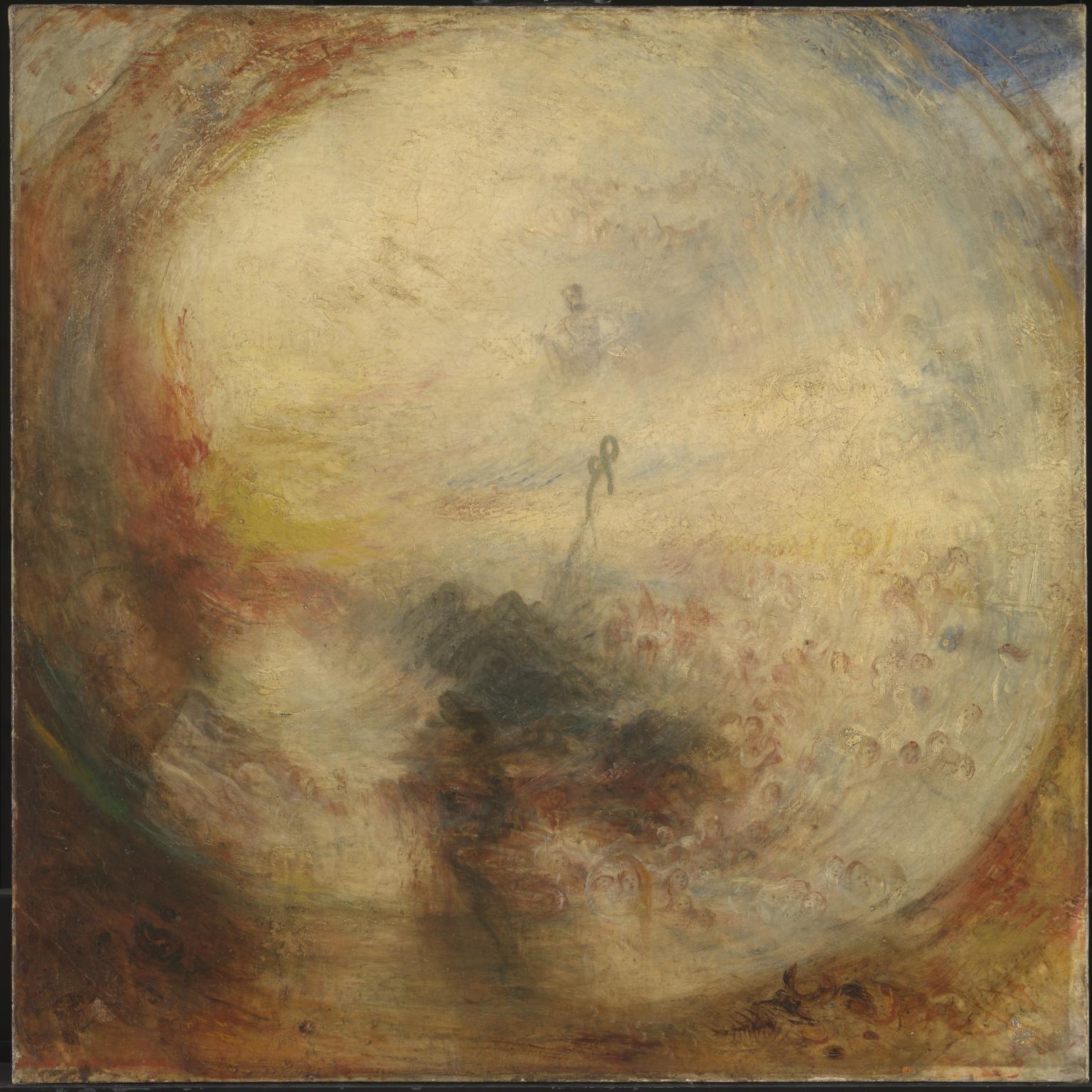J.M.W. Turner (1775-1851) was perhaps one of the most influential artists of the 19th century. Born in London, Turner was recognized at a young age for his artistic talents. Turner’s earlier works seemed to stay true to the style of the day. Interested in landscapes, Turner’s initial paintings followed the photographic-like color schemes that, although brilliant, were very typical of his day. His initial success would ultimately lend him a famed reputation as a master painter. It wasn’t until later on that Turner would begin experimenting with the splashes of colors and shading for which he would eventually become known. This particular piece, Light and Colour, illustrates Turner’s experimentation of radical style. Drawing from Goethe’s theory of color, which stated that every color was an individualist combination of particular lights and shades, Turner depicts a divine catastrophe in the form of a great storm swirled and bent in a haze of orange madness. Although regarded as masterpieces now, these later works were seen with harsh criticism. It wouldn’t be until two decades later that Turner’s work would find new light in the eyes of what would eventually become the Impressionists. Monet, in particular, was extremely influenced by Turner’s abstract use of color to capture fluid scenery.
This piece and its complementary piece, Shade and Darkness, were actually stolen from the Schirn Kunsthalle in Frankfurt, Germany, in 1994. It would not be until 8 years later that the piece would be recovered, found hidden by the thieves and luckily completely intact. Turner is revered today for his experimental expressionism, his influence, and the sheer beauty of his innovative techniques using light and color.
He once said, “It is only when we are no longer fearful that we begin to create.”
- Alexander Smith

